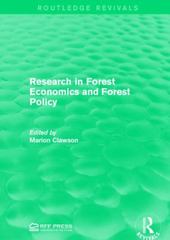Question
Q1. Which of the following statements is true regarding the differences between economic and accounting costs? a. Accounting costs include all implicit and explicit costs.
Q1. Which of the following statements is true regarding the differences between economic and accounting costs?
a. Accounting costs include all implicit and explicit costs.
b. Economic costs include implied costs only.
c. Accountants consider only implicit costs when calculating costs.
d. Accounting costs include only explicit costs
Q2 The law of diminishing returns states that
a. as the use of an input increases with other inputs fixed, the resulting additions to output will eventually decreases.
b. the marginal product of a good eventually becomes negative.
c. the marginal rate of technical substitution between inputs is decreasing.
d. as technology improves, inputs will become less productive.
Q3 Theslopeof the total product curve is the
a. average product.
b. slope of a line from the origin to the point.
c. marginal product.
d. marginal rate of technical substitution
Q4. When labor usage is at 12 units, the output is 36 units. From this, we may infer that
a. the marginal product of labor is 3.
b. the total product of labor is 1/3.
c. the average product of labor is 3.
d. none of the above
Q5. In a certain textile firm, labor is the only short-term variable input.The manager notices that the marginal product of labor is the same for each unit of labor, which implies that
a. the average product of labor is always greater that the marginal product of labor
b. the average product of labor is always equal to the marginal product of labor
c. the average product of labor is always less than the marginal product of labor
d. as more labor is used, the average product of labor falls
Q6. An isocost line reveals the
a. costs of inputs needed to produce along an isoquant.
b. costs of inputs needed to produce along an expansion path.
c. input combinations that can be purchased with a given outlay of funds.
d. output combinations that can be produced with a given outlay of funds.
Q7. Which of the following isNOTan expression for the economic condition that will help a producer to find the cost-minimizing combination of inputs?
a. MRTS = MPL /MPK
b. MPL/w = MPK/r
c. MRTS = w/r
d. MPL/MPK = w/r
e. none of the above
Q8. A firm's expansion path is
a. the firm's production function.
b. a curve that makes the marginal product of the last unit of each input equal for each output.
c. a curve that shows the least-cost combination of inputs needed to produce each level of output for given input prices.
d. none of the above
Carolyn knows the average total cost and average variable cost for a given level of output.She knows the given level of output. Which of the following costs can she not determine given this information?
a. total cost
b. average fixed cost
c. fixed cost
d. variable cost
e. Carolyn can determine all of the above costs given the information provided.
Q10. The total cost (TC) of producing computer software diskettes (Q) is given asTC = 200 + 5Q.
What is the variable cost?
Group of answer choices
a. 200
b. 5Q
c. 5
d. 5 + (200/Q)
e. none of the above
Step by Step Solution
There are 3 Steps involved in it
Step: 1

Get Instant Access to Expert-Tailored Solutions
See step-by-step solutions with expert insights and AI powered tools for academic success
Step: 2

Step: 3

Ace Your Homework with AI
Get the answers you need in no time with our AI-driven, step-by-step assistance
Get Started


